
Hollywood Actors
Mary Robin-Redd was born in 1939. She made her TV debut in 1958 in “Highway Patrol”. She is primarily know for her role in Sidney Lumet’s “The Group” in 1966. Her other movies include “J.W. Coop” and “The Great Northfield Minnesota Raid”.
IMDB entry:
Mary-Robin Redd was born on March 18, 1939 in Los Angeles, California, USA. She is an actress, known for The Group (1966), Airplane II: The Sequel (1982) and Quarterback Princess (1983).

Richard Benjamin was born in 1938 in New York City. He is now a film director but in the late 1960’s and early 1970’s he gave some terrific performances in such films as “Goodbye Columbus” in 1969 with Ali MacGraw, “The Sunshine Boys” with Walter Matthau and George Burns and “Westworld” with Yul Brynner in 1974. He is married to Paula Prentiss.
TCM overview:
Best known for his characterizations of two Philip Roth characters, in “Goodbye Columbus” (1969) and “Portnoy’s Complaint” (1972), Benjamin had walk-on juvenile parts in some 1950s films and first earned adult recognition on Broadway, starring in Neil Simon’s “Star-Spangled Girl” (1966). He had directed “Barefoot in the Park” in London the previous year. Other off-beat acting highlights include “Catch-22” (1970) and “The Sunshine Boys” (1975).
Benjamin made a promising directorial debut with “My Favorite Year” (1982), a comic look at the early days of TV featuring a glorious performance by Peter O’Toole. However his subsequent directorial efforts have not been comparable commercially or critically. A conventional storyteller, Benjamin has worked with a wide assortment of actors in several genres. His second film, “Racing With the Moon” (1984), was a war romance starring Sean Penn and Elizabeth McGovern. Benjamin followed up with a pair of undistinguished comedies: “City Heat” (1984), a period detective comedy starring Burt Reynolds and a surprisingly funny Clint Eastwood and “The Money Pit” (1986), featuring Tom Hanks, Shelly Long, and a collapsing house in a Steven Spielberg-produced comedy which confused laughs with special effects. Benjamin’s spy drama, “Little Nikita” (1988), offered the intriguing pairing of Sidney Poitier and River Phoenix, but audiences steered clear. Benjamin also tried his hand at high-concept comedy with “My Stepmother Is an Alien” (1988) with Dan Aykroyd and Kim Basinger and moved on to an action comedy, “Downtown” (1990), with Anthony Edwards and Forest Whitaker. Benjamin regained some degree of critical success that same year with “Mermaids”, a touching mother-daughter comedy starring Cher, Winona Ryder, and Bob Hoskins. After a hiatus, he directed Whoopi Goldberg and Ted Danson in the romantic comedy, “Made in America” (1993) and helmed the pallid “Mrs. Winterbourne” (1996), which starred Ricki Lake and Shirley MacLaine.
The above TCM overview can also be accessed online here.
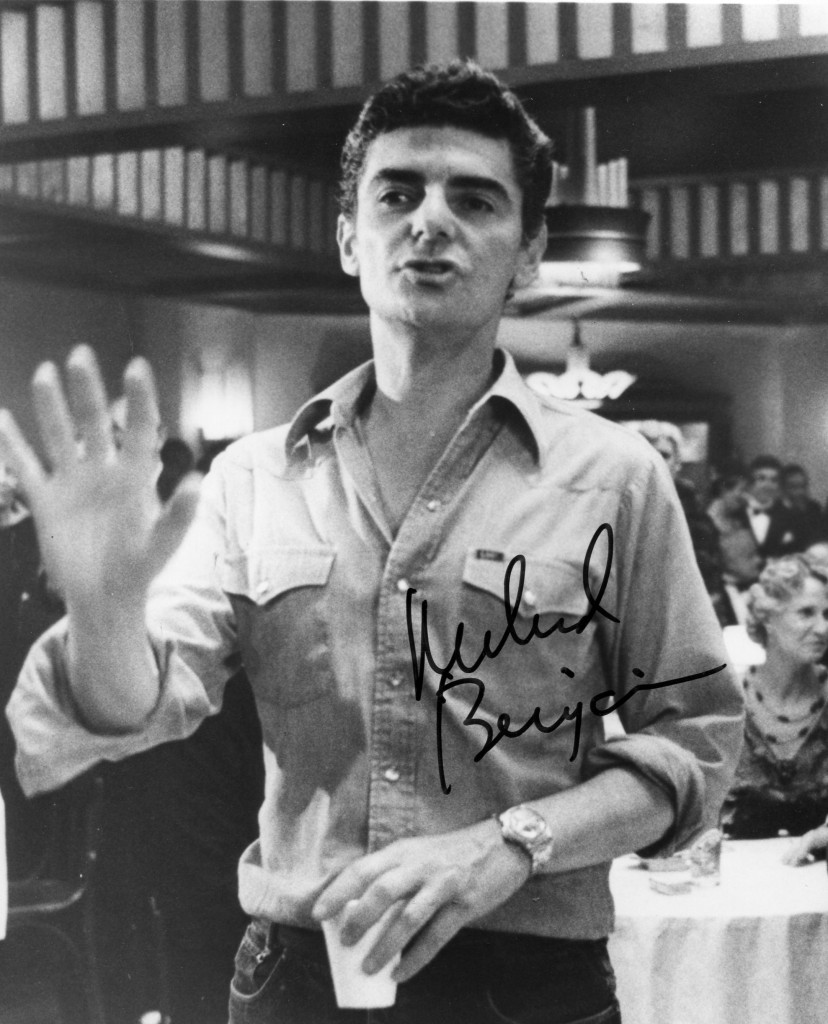
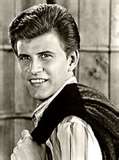
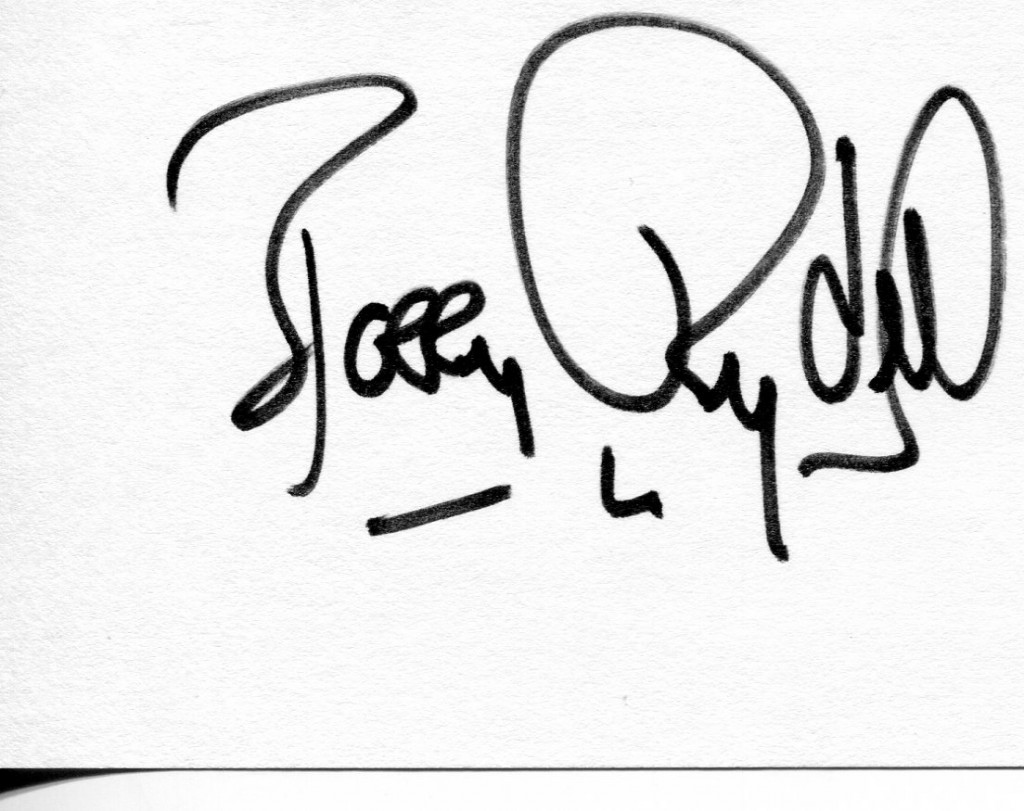
Bobby Rydell was born in 1942 in Philadelphia. He was a popular singer in the early 1960’s and appeared in the film musical “Bye Bye Birdie” with Ann-Margret and Dick Van Dyke in 1963. In 1970 he starred with John Wayne andMaureen O’Hara in “Big Jake”.
IMDB entry:
Part of the Philadelphia music scene which also spawned Frankie Avalon and Fabian, Rydell was undoubtedly the most talented of the teen idols. After a number of song hits, including “Wild One” and “Volare”, he starred in Bye Bye Birdie (1963) before hitting the nightclub circuit. He still appears regularly on “oldies” shows, although he hasn’t had a hit since the early 1960s.
In 1962, as a member of the celebrated Theatre Moufftard in Paris, young Phillipe Forquet was discovered by American director, _Robert Parrish, who gave him an important role in a movie based on Irwin Shaw’s novel, In the French Style (1963). Learning English as he went along, he played the handsome and somewhat naive younger boyfriend ofJean Seberg, who had won popular acclaim in France when she starred in the Otto Preminger film Saint Joan (1957). She was very popular in France.
Attractive French movie stars were very prevalent in Hollywood throughout the 50s and 60s. Maurice Chevalier, Yves Montand and Brigitte Bardot were household names and a new generation of new European ‘hotties’ were coming up such as Jean ‘Paul Belmondo’,Alain Delon, Catherine Deneuve and Louis Jourdan. Highly regarded for his extraordinary good looks, Forquet was spotted by producers at Twentieth Century Fox, and was offered a contract. In 1962 he was flown to Hollywood to be groomed into the new French Heartthrob.
His first role was as a French artist and love interest in _Take Her, She’s Mine (1963)_, also starring James Stewart and Sandra Dee, a very popular teen star at the time who was married to Bobby Darin. Rather shy and introspective, intelligent and well read, the young Philippe began life as a rising movie star. His dark good looks, sharp wit and Gallic charm caused quite a flurry among the ladies. He received thousands of fan letters a week and was featured in fan magazines. He was being hailed as a new Montgomery Clift.
While working on the film, he fell in love with a young starlet, Sharon Tate, who was also under contract to a studio and they became formally engaged. They eventually broke the engagement as the pressures of her rising career began to interfere with their personal lives. As a result, he broke his contract and decided to go back to Europe.
He was type cast several times as a French aristocrat. In the cult film Camille 2000, he played the darkly handsome and dangerous Count De Varville. He played against ‘Rod Steiger (I)’ in the Russian co-production, _Waterloo_ as the Duc De LaBedoyere, the Generals aide De camp.
He did return to Hollywood in 1970 to star in the ABC TV Series, The Young Rebels(1970) produced by Aaron Spelling. As yet another French nobleman, he played the American Revolutionary War hero, General Marquis De Lafayette. He received thousands of fan letters and was featured in many fan magazines as the new French heartthrob again. Girls found his dimples and French accent “devastating.” They sent for posters of him and entered contests to win a date. The series, which was running against Lassie and Disney, rated third in the 7:00 time slot on network TV. It was canceled after one season.
He and Linda Morand took time off and got married. They traveled throughout Europe. Forquet paid less attention to his acting career and became involved with his family businesses. By the mid-Seventies he was retired from acting. The couple divorced amicably in 1976. He now he lives a quiet life in France, remarried with three children

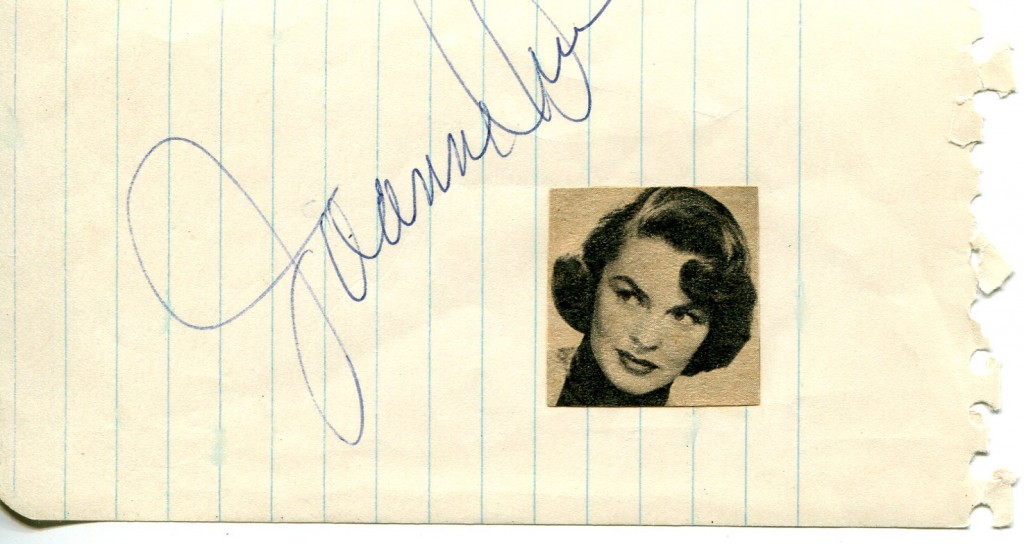
Joanne Dru was born in Logan, West Virginia in 1922. She was a very popular leading lady in many genres of Hollywood movies of the late 1940’s up to the mid 1950’s. She came to attention in both “Abie’s Irish Rose” and “Red River” opposite Montgomery Clift in 1948. She was also very effective in John Ford’s “She Wore A Yellow Ribbon”. One of her later movies was “Sylvia” in 1965 which starred Carroll Baker. Joanne Dru died in 1996.
Tom Vallance’s obituary in “The Independent”:
Ford’s She Wore a Yellow Ribbon (1949) was another classic in which Wayne poignantly played an ageing cavalry officer unable to come to terms with a changing way of life. As a young woman being escorted across country by the military troupe, Dru was courted by two of the officers (John Agar and Harry Carey Jnr). The same year she starred in Robert Rossen’s Oscar-winning All the King’s Men, based on the life of the former Louisiana governor Huey Long (here called Willie Stark) and an uncompromising portrait of an initially idealistic politician who turns corrupt and fascistic. Dru was a respectable girl who is blackmailed into becoming Stark’s mistress then abandoned, provoking Stark’s assassination by her brother. The story was seen through the eyes of a reporter played by John Ireland, who became Dru’s second husband. (The writer of Red River, Borden Chase, once recounted that he had been told to reduce Ireland’s role in that film because he was “messing with Hawks’s girl”.)
Both her marriages were reportedly stormy, and she continued to fight Haymes for alimony throughout his ensuring courtship of Rita Hayworth. John Ford’s Wagonmaster (1950; the director’s favourite of his films) was shot in Monument Valley and beautifully depicted the journey of a group of Mormons being guided by a tough cowboy (Ben Johnson) to their “promised land” in the unexplored west. Dru was a spirited medicine-show performer who becomes part of the wagon train in the film, which was a financial failure but is now regarded as a masterpiece.
None of Dru’s subsequent films approached the quality of these four, but Joseph H. Newman’s 711 Ocean Drive (1950) was an efficient film noir (allegedly shot under police guard) exposing gambling syndicates. Dru was the wife of a syndicate boss who falls in love with a former telephone engineer who has ruthlessly risen to be head of the gang. Rudolph Mate’s Forbidden (1953) was a sleek thriller in which a hoodlum (Tony Curtis) journeys to Macao to find Dru, a racketeer’s widow, and bring her back to the US with the incriminating evidence she possesses.
Many of Dru’s roles were, though, becoming blander – she was a social worker whose fiance takes her for granted in Mr Belvedere Rings the Bell (1951), a schoolteacher who brings a father and son closer in My Pal Gus (1953), the sweetheart of an oil-man prospecting in the Gulf of Mexico in one of Anthony Mann’s lesser pieces, Thunder Bay (1953), a nurse taming a troublesome convict in Duffy of San Quentin (1954), and a faithful secretary to Liberace as a concert pianist stricken deaf in the disastrous Sincerely Yours (1956).
She continued to appear in westerns – Vengeance Valley (1951), Return of the Texan (1952), Outlaw Territory (1953) and The Siege at Red River (1954), but these were routine affairs. The best of her later journeys west was Hall Bartlett’s Drango (1957), an interesting account of the reconstruction period after the Civil War, made by the star Jeff Chandler’s own production company and superbly photographed by James Wong Howe, with Dru effective as a Union sympathiser whose father is lynched by a Southern mob. She was active in television throughout the Fifties, guesting on many anthology shows including Wagon Train and Lux Video Theatre.
In 1981 she returned to the screen after a 16-year absence to star in Super-Fuzz, a low- budget action comedy, but she did not do it for the money. Since 1972 she had been married to C.V. Wood Jnr, a Texas multi-millionaire, the owner of an oil company and the Silver Lakes Nightclub, and a prime investor in the original London Bridge which was profitably reconstructed at Lake Havasu in Arizona.
Tom Vallance
The above “Independent” obituary can also be accessed online here.

Fiona Lewis is a beautiful British actress who has starred in Hollywood movies. She was born in Westcliffe-on-Sea, Essex in 1946. Among her early credits is an episode of “The Saint” with Roger Moore in 1966. Her UK films include “Dance of the Vampires”, “Otley” with Romy Schneider and “Villian” in 1970 with Richard Burton. In Hollywood she was featured in “Wanda Nevada” and “Strange Invaders”.
TCM overview:
This pretty British actress got her start being menaced and looking attractively frightened in low-budget horror films. She was first seen as a busty serving girl in Roman Polanski’s ambitious “The Fearless Vampire Killers” (1967), then went on to lend an unwonted grace to such blood-soaked fare as “Dr. Phibes Rises Again” (1972), and “Blue Blood” (1973).
It wasn’t all blood and guts, however. Lewis had a supporting role in the slapstick spy comedy “Otley” (1969), played a highwayman’s wench in “Where’s Jack?” (also 1969), was Ian McShane’s girlfriend in the Richard Burton vehicle “Villain” (1971) and dallied with Liszt in Ken Russell’s bizarre, over-the-top “Lisztomania” (1975).
Dismayed by the way her career was going in England, Lewis ventured to the US. She appeared in the Dino De Laurentiis potboiler “Drum” (1976), played a journalist in “Stunts” (1977), and had a few good moments in Brian De Palma’s “The Fury” (1978), as a sexy government agent who comes to a very unhappy end. She showed up in the unsuccessful Western “Wanda Nevada” (1979), was a deliciously evil nurse in the Australian “Strange Behavior/Dead Kids” (1979), had a nice bit as an alien in “Strange Invaders” (1983) and played a doctor in Joe Dante’s sci-fi adventure “Innerspace” (1987).

Although Lewis has been seen on British TV (and was made sport of on “Monty Python’s Flying Circus”), her lone American appearance was as Lucy in the CBS version of “Dracula” (1974). Between film roles, Lewis has scripted a number of screenplays, worked as a journalist and has had her artwork exhibited.

Article from 1986 in “The New Yorker”:
PERSONAL HISTORY by Fiona Lewis about about her career as a B-movie actress. Fiona Lewis, a British upper-class girl, arrived in Los Angeles, from London, in the early ’70s. She slipped easily into modeling and acting. The story of her rise to semi-fame is simply this: she was willing to take her clothes off. In L.A., she dated Cary Grant for a while until she realized that it was his daughter, not him, who actually required a date. …She had never taken acting classes, but she was selected by Roman Polanski to play a bawdy maid in his film “The Fearless Vampire Killers, or Pardon Me, but Your Teeth Are in My Neck.”

In California, she was picked by Dino De Laurentiis to be in her first Hollywood film, “Drum”–two hours jampacked with sadism, depravity, and melodrama… She starred in Michael Laughlin’s “Strange Behavior,” playing a diabolical scientist. During the ’70s, Lewis also had liasons with at least 4 writers, under the false impression that with them she would be allowed to reveal her secret intellectual self.

She lived with a Chicago screenwriter named John until he seduced the leading lady in his directorial debut. Meanwhile, Lewis spent a lot of time at Tony Richardson’s home, where she met writers Nos. 2 and 4… Next, Lewis posed for “Playboy.”

By 1977, she had made a few forays into journalism, freelancing for the L.A. “Times.” In between writing assignments and unsatisfactory affairs with writers, she hung out with her girlfriends: women also negotiating the end of their 20s…

After her 4th affair, with a writer named Douglas, Lewis decided to end her infatuation with writers. One of her last acting attempts was “The Fury,” a flashy terrorist yarn of psychic horror, with nudity and oceans of blood.

The movie featured a particularly gruesome sex scene, which was later cut, but still photos from the omitted scene turned up years later, after Lewis had spent 10 years as a screenwriter and had written her first novel.

At a reading she was giving in an L.A. bookstore, a man asked her to sign one of those photos from the film. Whether she liked it or not, she was still in show business.The above “New Yorker” article can be also accessed online here.

TCM overview:
Gaunt, wiry, prolific supporting player with a piercing stare, familiar from the hundreds of films in which he played mean or menacing characters in the course of a seven-decade career. After appearing on the Broadway stage, Wolfe made his film debut in his late 30s and, already balding, quickly won notice as Captain Bligh’s cruel storekeeper and stool pigeon Maggs in “Mutiny in the Bounty” (1935). Wolfe went on to make more than 150 film appearances, often playing English or clerical characters, in films including the horror comedy “Homebodies” (1974, a starring role); Mike Nichols’ “The Fortune” (1975, as the dithery old justice of the peace); “Creator” (1985); “Checking Out” (1988); and “Dick Tracy” (1990). Wolfe also played Wizard Tranquil on the 1983 TV series, “Wizards and Warriors”.
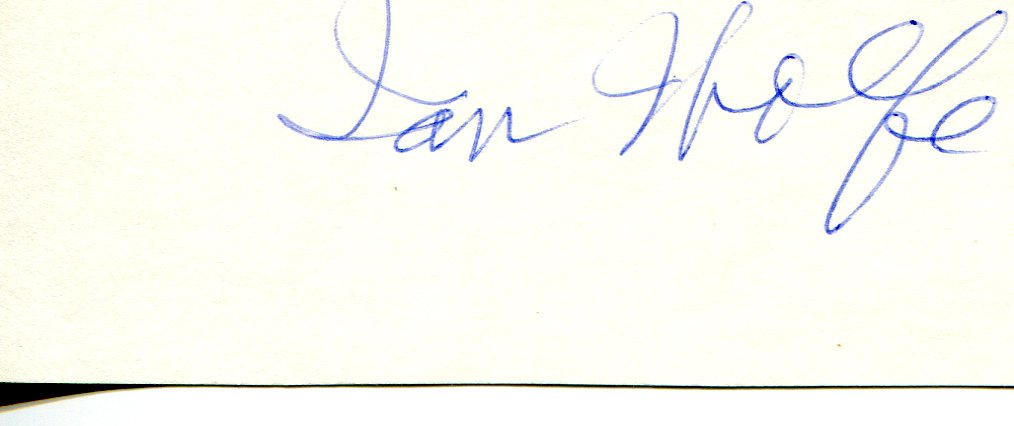

Betty Grable, the Force’s Sweetheart was born in 1916 in St. Louis, Missouri. She was a supporting player in Hollywood films of the 1930’s bu came into her own in the early 1940’s in a series of 20th Century Fox musicals including “Down Argentine Way”, “Tin Pan Alley” and in 1941, “Moon Over Miami”. She starred with Victor Mature in the film noir “I Wake Up Screaming”. She was one of the most popular of stars during World War Two. Her film career lasted until the 1950;s when she made “How to Marry A Millionaire” with the up and coming repacement Marilyn Monroe. Betty Grable continued her career on the stage and in supper clubs. She died in 1973.
TCM Overview:
The biggest box office star of the 1940s and the most desired WWII pin-up girl, acting-singing-dancing triple-threat Betty Grable became the stuff of Hollywood legend after her studio reportedly insured her famously gorgeous legs for $1 million with Lloyd’s of London – the same legs that were captured in one of the most iconic photographic images of the 20th century. After a decade of toiling with minor roles in dozens of films, Grable rose to fame with the musical “Down Argentine Way” (1940). From there it was on to a string of hits alongside leading men that included Victor Mature, Cesar Romero and Dan Dailey in such films as “I Wake Up Screaming” (1941), “Coney Island” (1943) and “Mother Wore Tights” (1947), respectively. So desired was the bubbly blonde that bandleader Harry James became the most envied man in America when he famously wed the pin-up queen in 1943. Grable single-handedly caused Twentieth Century stock to soar for a solid decade before the girl-next-door’s Technicolor reign began to wind down. Even as the sun was setting on Grable’s movie career by the early 1950s – as had her desire to continue to make movies – she enjoyed one final hit as she passed the torch to her successor and fellow Fox contract player, Marilyn Monroe, in “How to Marry a Millionaire” (1953). Grable gracefully retired from film two years later and enjoyed a brief run in a hugely successful Broadway mounting of “Hello, Dolly!” in 1967 before her untimely passing six years later. While some of the films in her incredibly prolific canon may not have stood the test of time, there was no denying the joy Betty Grable brought to many fans, both at home and abroad, during that pivotal decade in American history.
Born Elizabeth Ruth Grable on Dec. 18, 1916 in St. Louis, MO, she was the youngest of three children born to parents Lillian Rose Hofmann and John C. Grable. Having set her sights on stardom for young “Betty” early on, formidable stage mom Lillian enrolled her daughter in ballet and dance lessons at the age of three. Ten years later, Lillian took Betty out West in search of fame, soon securing her 13-year-old a job as chorus girl in the musical “Happy Days” (1929). Being a minstrel show, the blackface Betty wore in her film debut helped to cover her age. However, after a forged identification card was discovered by the producers of her next film, Betty was let go. In a further effort to mask her underage daughter’s youth, the wily Lillian dyed Grable’s brown hair a striking platinum blonde. It was a signature look the entertainer would maintain throughout her entire career. Soon, more jobs came her way, with work as a Goldwyn Girl for producer Samuel Goldwyn in the Eddie Cantor Western musical “Whoopee!” (1930) – in which she led the film’s opening number “Cowboys” – and “Kiki” (1931), starring former silent film star Mary Pickford. After being assigned the stage name of Francis Dean, Grable went on to sing and dance in a series of short projects that included “Crashing Hollywood” (1931) and “The Greeks Had a Word for Them” (1932).
Grable at last appeared under her own name with a small role in the film “Probation” (1932), and continued to appear in small roles for various studios in such projects as “What Price Innocence?” (1933) and the Academy Award-winning Fred Astaire-Ginger Rogers musical “The Gay Divorcee” (1934). Broad acclaim and recognition eluded her, however, and during a period in which she continued to toil away with small roles in unremarkable productions, a 21-year-old Grable married former child star Jackie Coogan. Fortune smiled on the young actress, who at the time was considering an early retirement from show business, when her role in the 1939 Broadway production of Cole Porter’s “Du Barry Was a Lady” brought Grable the acclaim she had doggedly pursued for so long. After the short-lived marriage to Coogan – with who she appeared in the aptly-titled “Million Dollar Legs” (1939) – ended in 1940, the actress’ disappointment was counterbalanced by a leading role in “Down Argentine Way” (1940). A Technicolor musical extravaganza co-starring Don Ameche and Carmen Miranda, it became a smash hit and turned Grable into a bona fide movie star. Musical comedies like “Tin Pan Alley” (1940) and “Moon Over Miami” (1941) capitalized on her success, while projects such as the noir “I Wake Up Screaming” (1941) gave her the rare opportunity to tackle dramatic material.
Over the following decade, Grable became the top female star of the 1940s – and third overall, behind Bing Cosby and Bob Hope – in films that accentuated her hard-earned ability and fan appeal. “Song of the Islands” (1942), “Springtime in the Rockies” (1942) and, of course, “Pin Up Girl” (1944) capitalized on the star’s iconic status as a photo favorite of millions of servicemen during the Second World War. It was during her reign that Grable posed for her famous bathing suit pin-up photo, which was taken by studio photographer Frank Powolny in 1943. It was later rumored that the particular pose and angle from behind were chosen to hide the fact that Grable was pregnant at the time by the most “envied man in America.” That same year, she married for a second time to popular bandleader and trumpeter Harry James. Although this union would last for a substantial 22 years and produce two children, it was, by all accounts a marriage fraught with strife and infidelities.
Even in peacetime, Grable’s success continued apace, with popular fare such as “Mother Wore Tights” (1947) – featuring her favorite co-star, Dan Dailey – “That Lady in Ermine” (1948) and “My Blue Heaven” (1950). Despite having fallen off the box office exhibitors list for the first time in 10 years two years earlier, Grable was still more than capable of holding her own on screen opposite cinema sirens Marilyn Monroe and Lauren Bacall in “How to Marry a Millionaire” (1953). As her once irresistible box office draw began to wane, so too did Grable’s relationship with studio executives at 20th Century Fox, and by the mid-1950s she began a transition to television and stage work. Her final big screen appearance came in the form of the forgettable crime comedy “How to Be Very, Very Popular” (1955), a film most notable as being the picture Marilyn Monroe refused to take part in. It also gave Grable the excuse to retire from movies. She would go on to make a smattering of appearances on television programs such as “Star Stage” (NBC, 1955-56), and in 1967 took over for Carol Channing in the long-running hit Broadway musical “Hello, Dolly!” Having divorced from James in 1965 after years of heavy drinking, gambling and infidelity on both their parts, Grable entered into a relationship with Bob Remick, a dancer several years her junior. Although never married, the two remained together until Grable’s death from lung cancer in 1973 at the age of 56.
By Bryce Coleman

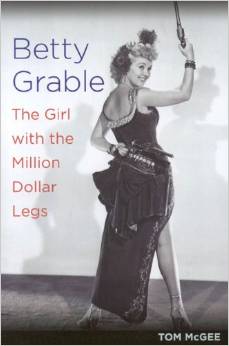
Anyone who knows me are aware that I am a bit of a movie buff. Over the past few years I have been collecting signed photographs of my favourite actors. Since I like movies so much there are many actors whose work I like.